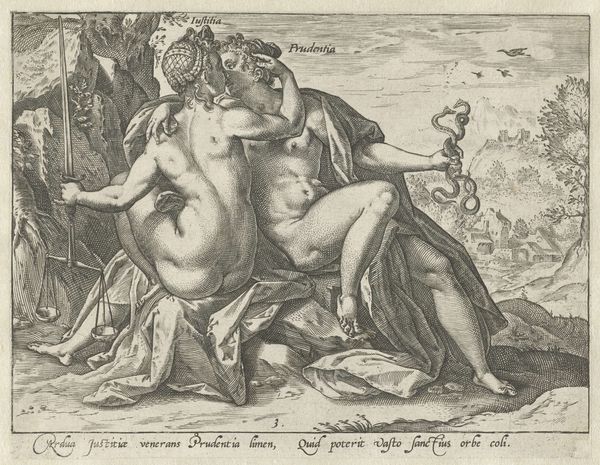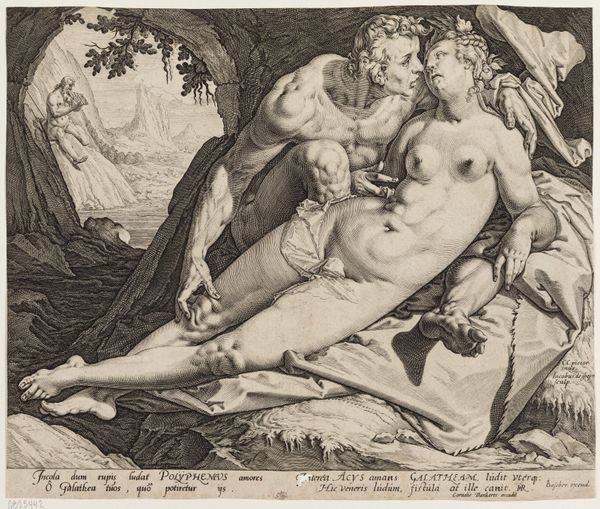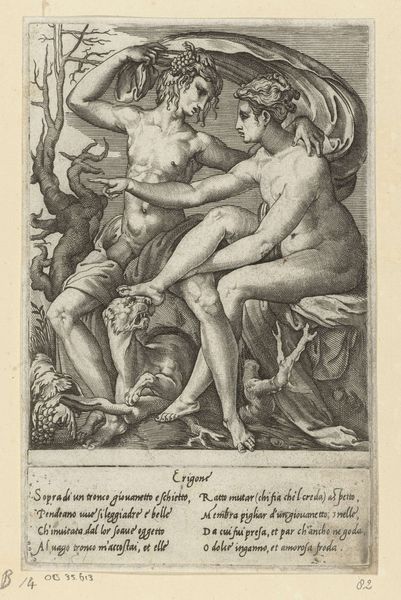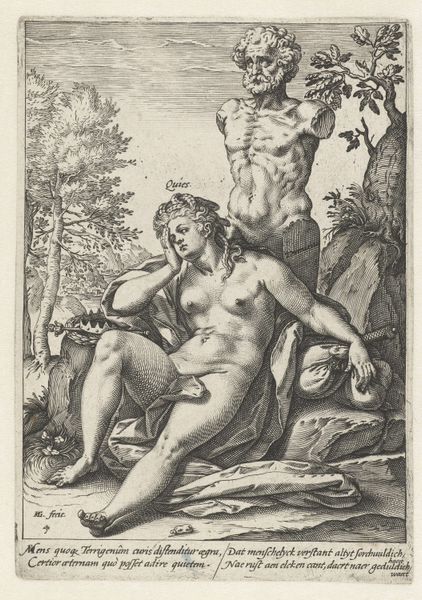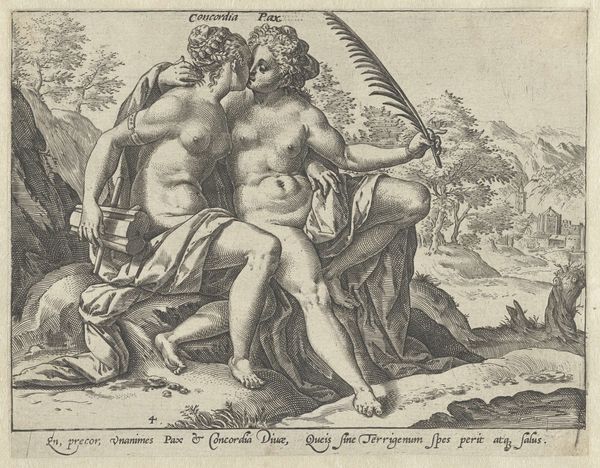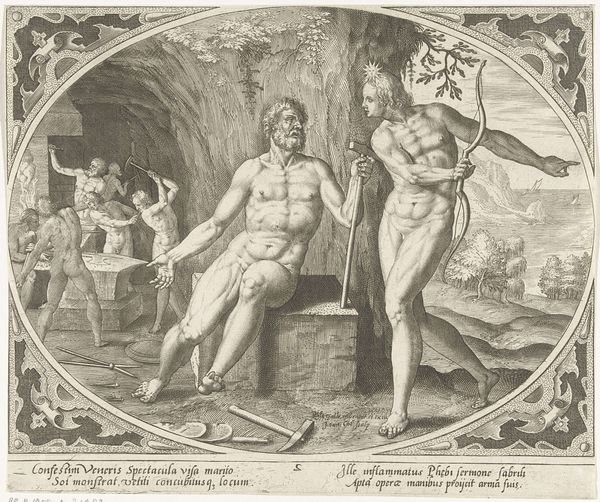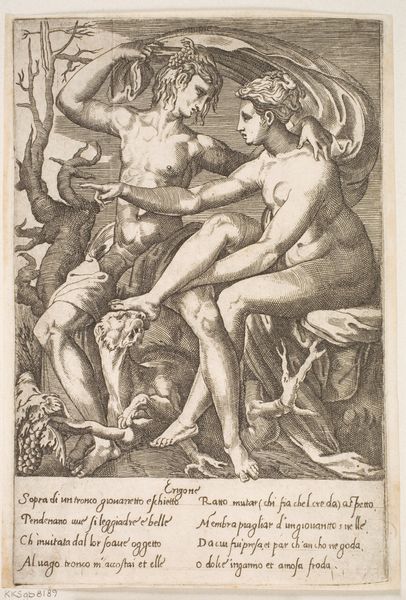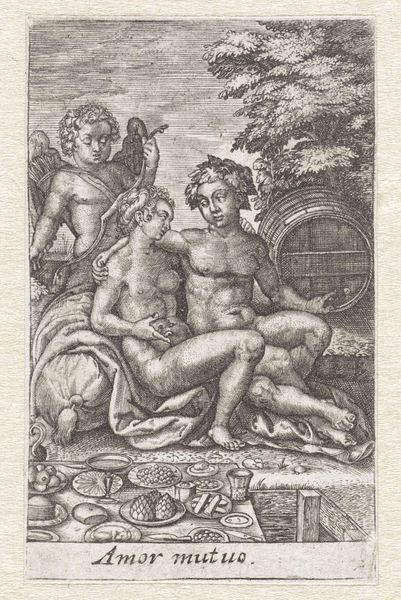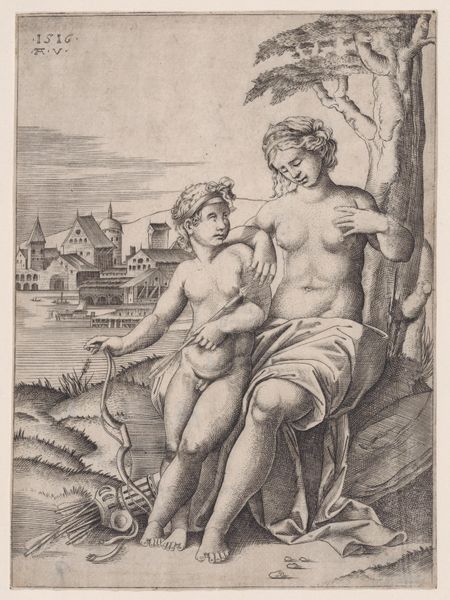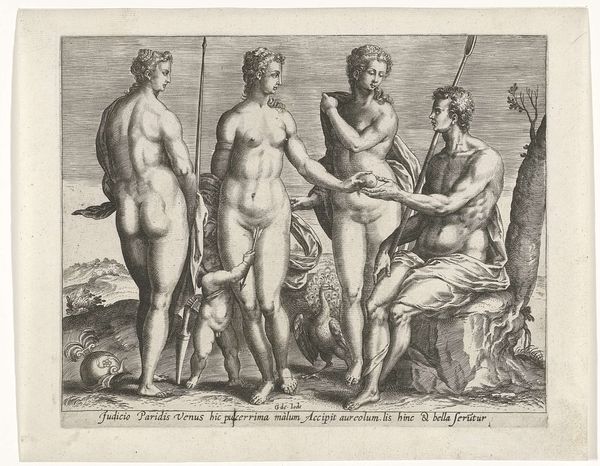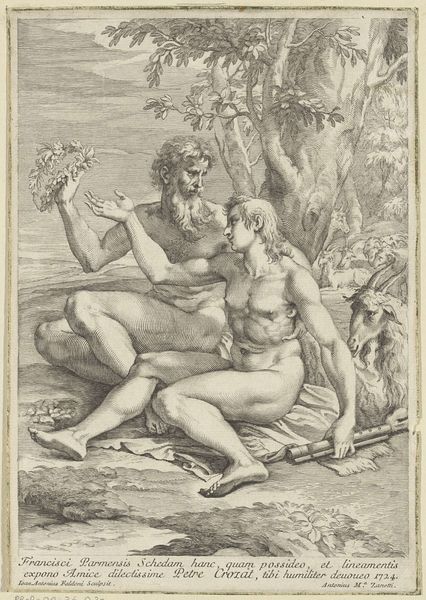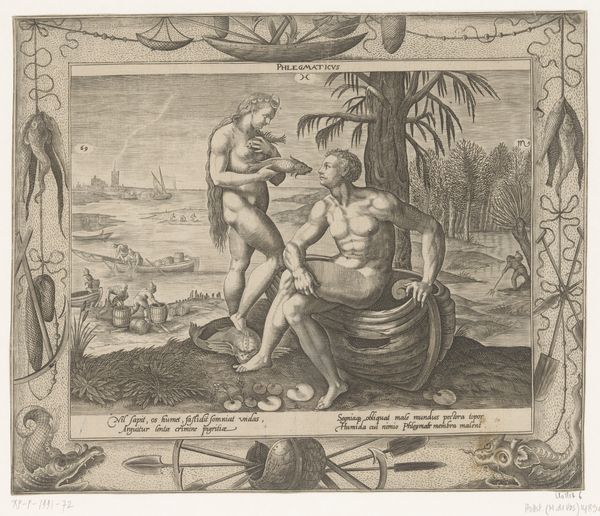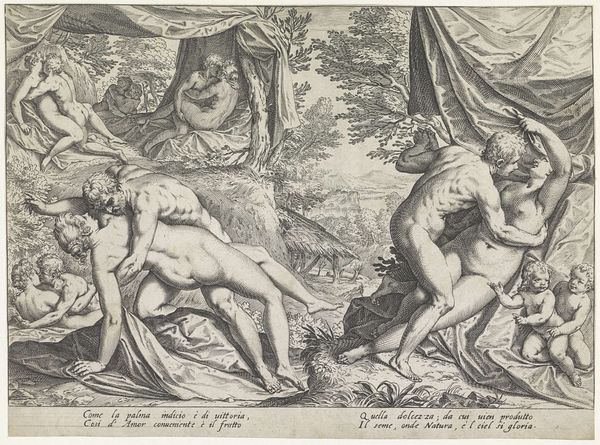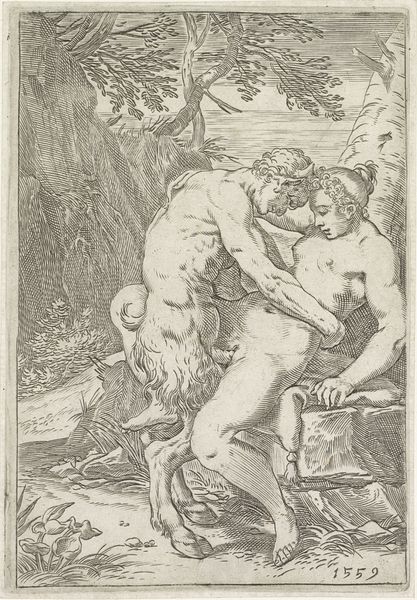
print, engraving
#
allegory
# print
#
old engraving style
#
mannerism
#
figuration
#
northern-renaissance
#
nude
#
engraving
Dimensions: height 153 mm, width 205 mm
Copyright: Rijks Museum: Open Domain
Editor: This engraving, "Hoop en Vertrouwen (Fidutia / Spes)" by Hendrick Goltzius, was created between 1580 and 1584. The detail is really impressive. What particularly stands out to me is how physical everything feels, from the weight of the anchor to the bodies of the figures themselves. What can you tell me about this piece? Curator: I’m drawn to how this engraving functions as a commodity in 16th-century Europe. Notice how Goltzius manipulates the metal plate to create a texture, which mimics skin? How does that affect your perception? We can think about who owned this image. Who could afford it? How would it be displayed, consumed? Also, consider the labor involved—the artisanal skill of the engraver. It elevates printmaking beyond mere reproduction, situating it as a significant mode of artistic production. Editor: That's fascinating. So, you are suggesting we look at the materials used in its production, and that tells us something about its value in the art world, then and now? I was just focusing on the subject matter, the allegorical figures of hope and trust. Curator: Absolutely! Don't dismiss the subject matter, but think of the raw materials—the metal plate, the ink, the paper—and how they were transformed. And how this process allows art to disseminate and enter new contexts. Editor: That makes me consider the political dimensions of this work, because prints can be duplicated, and this helps bring new and revolutionary ideas to society. Curator: Precisely. It moves us away from thinking only about high art. Can you imagine how this kind of knowledge changes the ways in which you experience artworks? Editor: Definitely. Considering the print as a manufactured object really changes how I see the art of the time. It broadens my appreciation beyond just the image itself. Curator: Exactly, by grounding art in its material conditions, we can really understand the work it performs within its specific social moment.
Comments
No comments
Be the first to comment and join the conversation on the ultimate creative platform.
